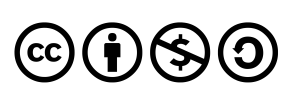AI Integration Framework
The three-level AI integration framework is proposed by Reis and Sun (2025). This framework categorises AI integration into three levels—basic, intermediate, advanced—guided by Bloom’s Taxonomy and Ng et al. (2021)’s AI literacy principles. Each stage progressively enhances AI use in curricula, balancing familiarity with innovation for educators and students.
Focuses on foundational AI literacy, aligning with Bloom’s Remembering and Understanding. Students use generative AI as a “virtual buddy” for brainstorming, feedback, and revisions. For example, AI-generated essay ideas are critiqued for coherence and accuracy, fostering critical evaluation (Evaluating). Teachers assess AI’s reliability by testing assignments against AI outputs, building awareness of AI’s limitations. This stage addresses Bloom’s 2 Sigma Problem by simulating personalised learning through AI-driven feedback, easing resource constraints. Activities include comparing AI tools (e.g., ChatGPT vs. Gemini) to analyse biases and refining prompts for image generation (e.g., visualising Zhuangzi’s parables), fostering interpretive and analytical skills.
Emphasises Applying and Analysing by integrating AI into content creation aligned with Universal Design for Learning (UDL). Students design multi-format resources (infographics, podcasts) using AI, enhancing knowledge comprehension, accessibility, and engagement. For instance, a history student might generate a mind map with text, images, and audio, promoting collaborative, inclusive learning. This stage refines prompting skills, enabling nuanced AI interactions and iterative content refinement, bridging theoretical knowledge with practical application.
Targets Creating and Evaluating through real-world, interdisciplinary projects. Students develop industry-standard AI applications, such as language-learning tools with adaptive feedback. Teams engage in iterative design cycles—researching user needs, prototyping, testing, and refining—guided by teachers as facilitators. Projects embed ethical analysis and authentication checks (e.g., cross-referencing AI outputs with credible sources), cultivating technical, creative, and critical competencies.





Introduction
When considering the incorporation of AI into educational practices, a critical aspect is to align the integration strategy to the existing AI literacy and experiences of both teachers and students. This alignment is essential because it ensures that the introduction of AI integration into learning and teaching is manageable and constructive. If the integration strategy is too advanced for the current level of AI literacy of teachers and students, it may lead to confusion, frustration, and a lack of engagement. Conversely, if the strategy is too basic, it may not challenge or adequately prepare students for the increasingly AI-driven world.